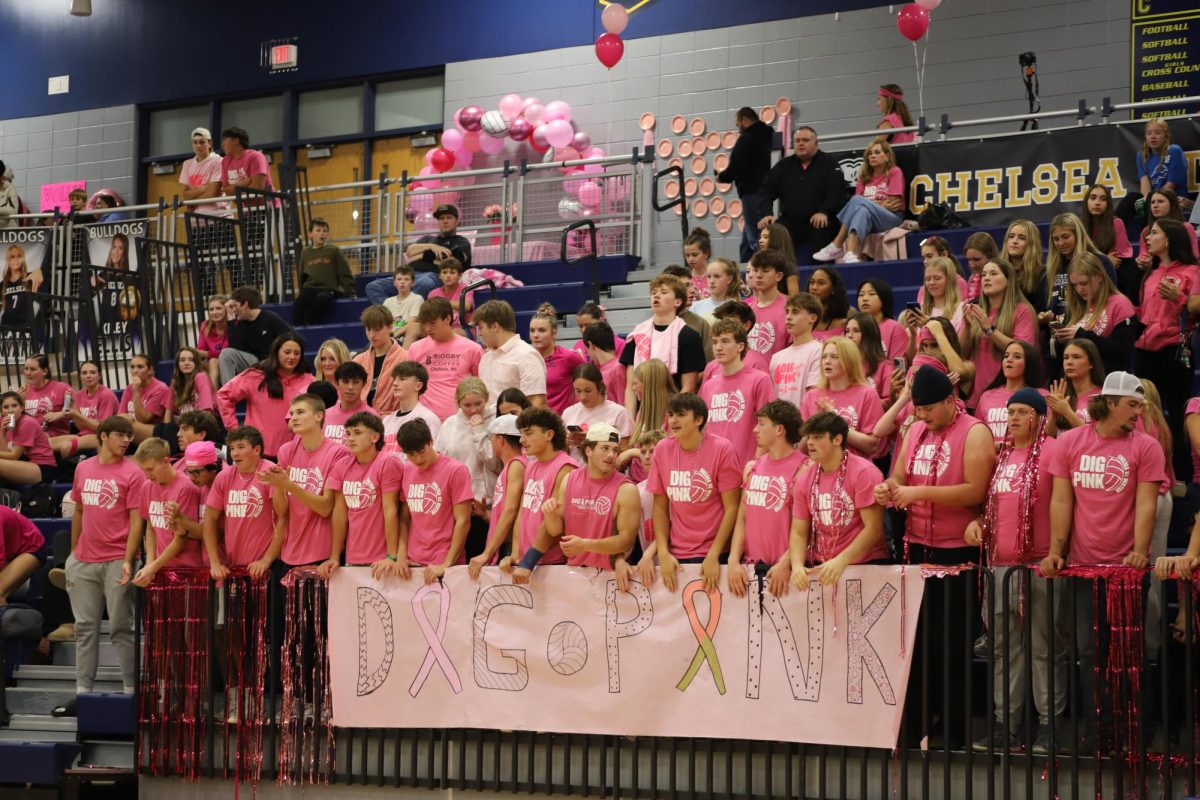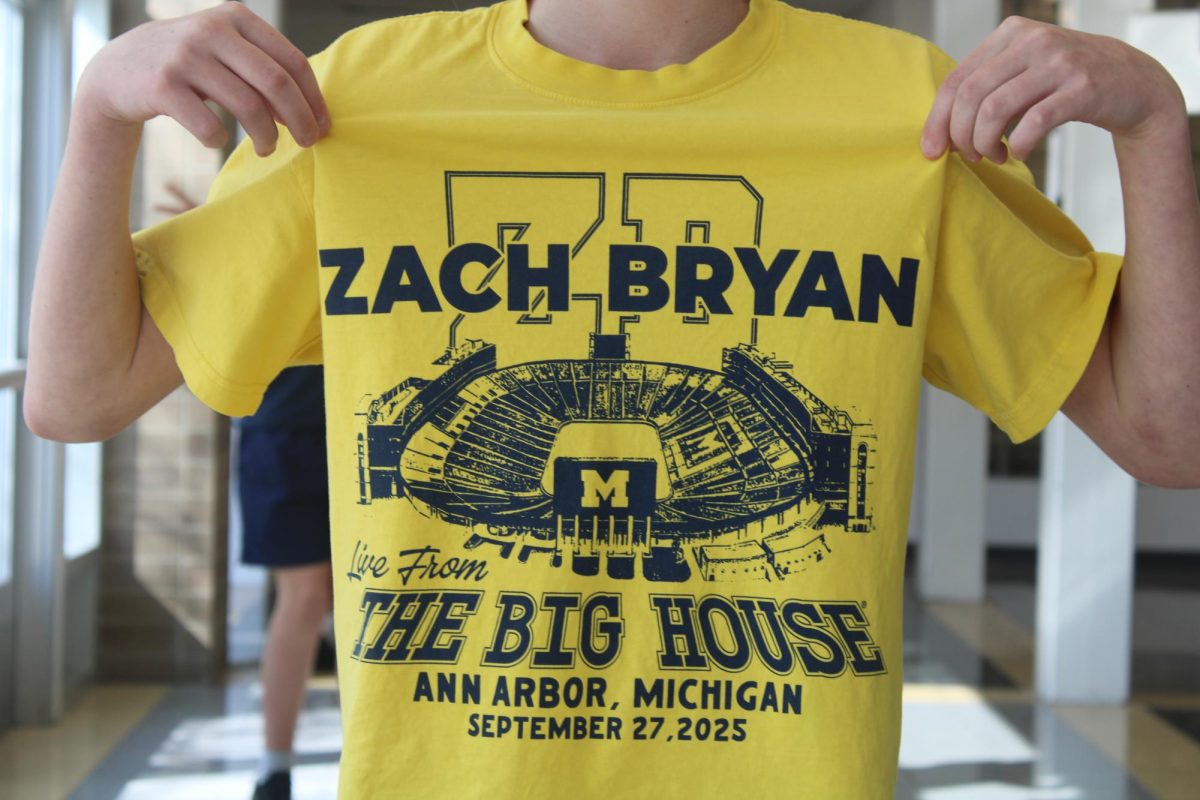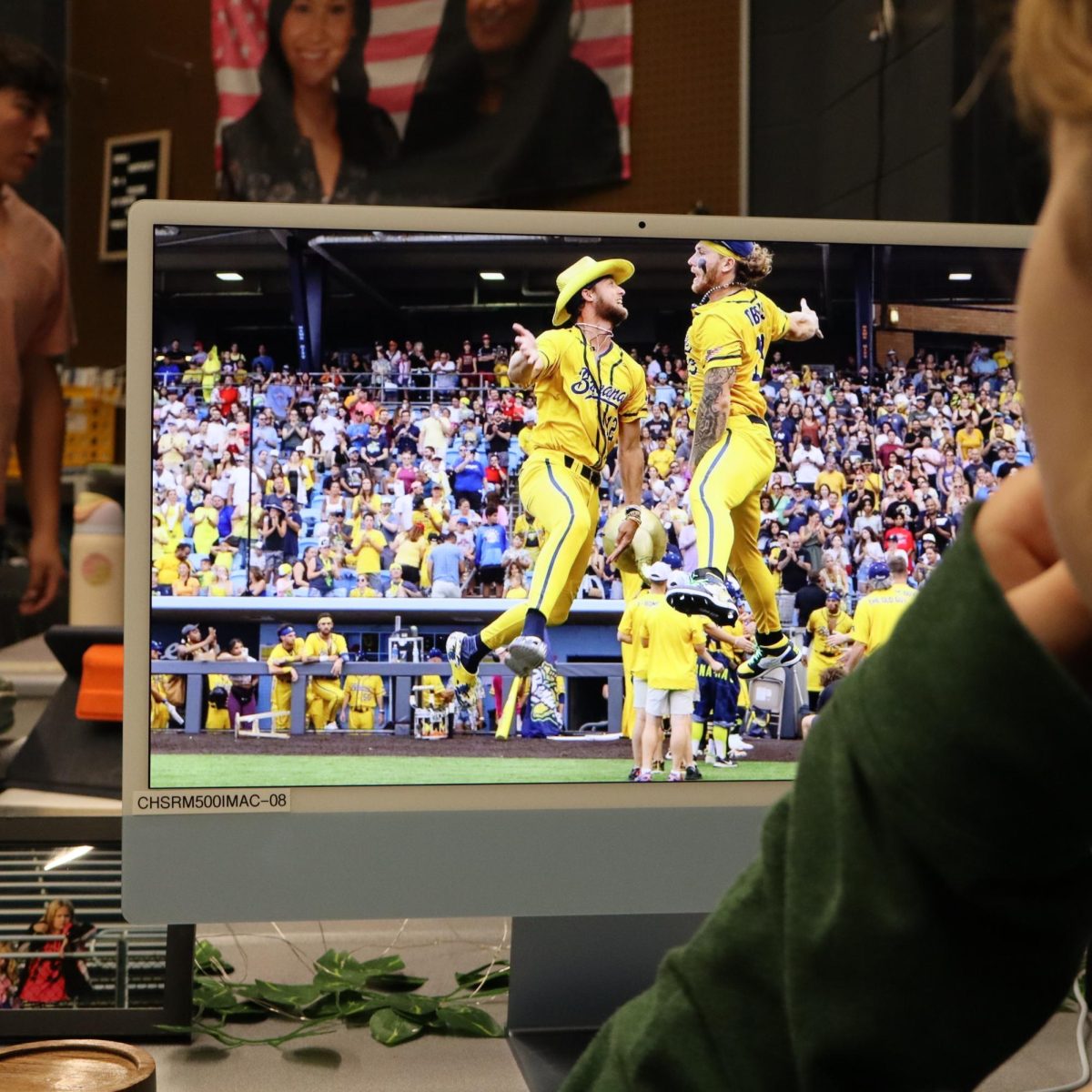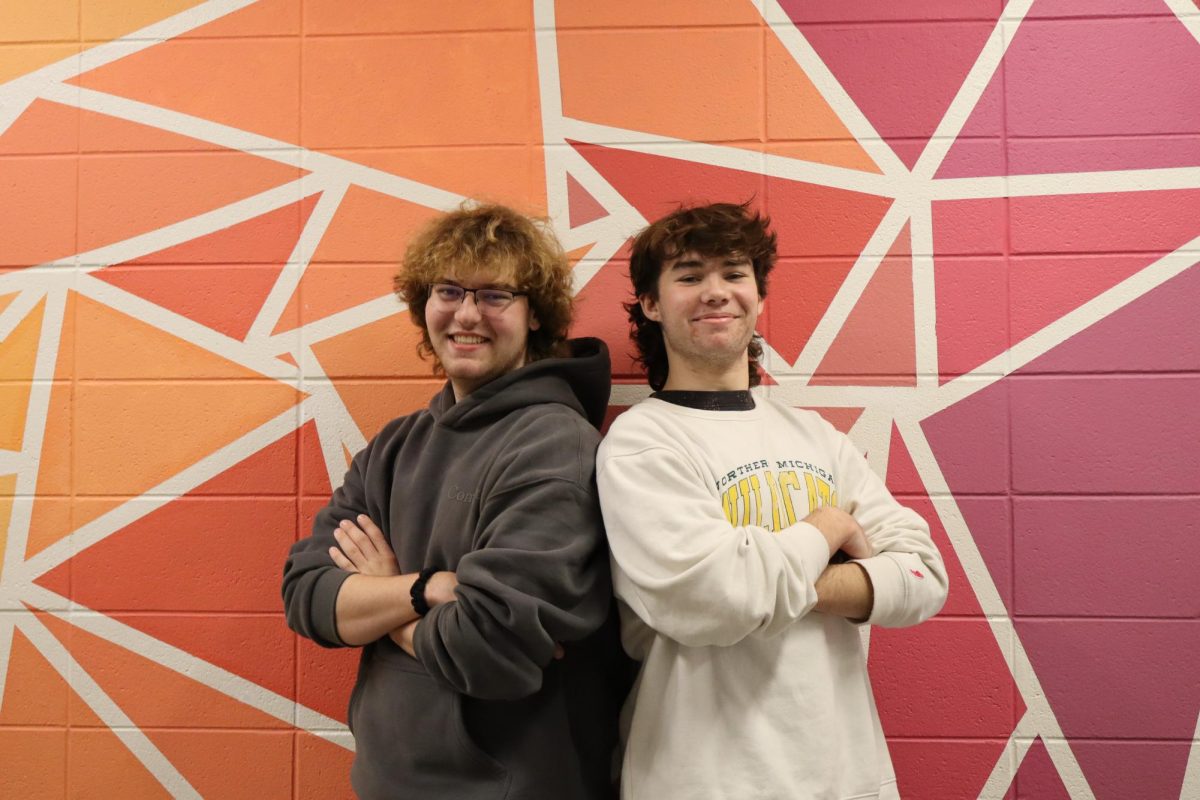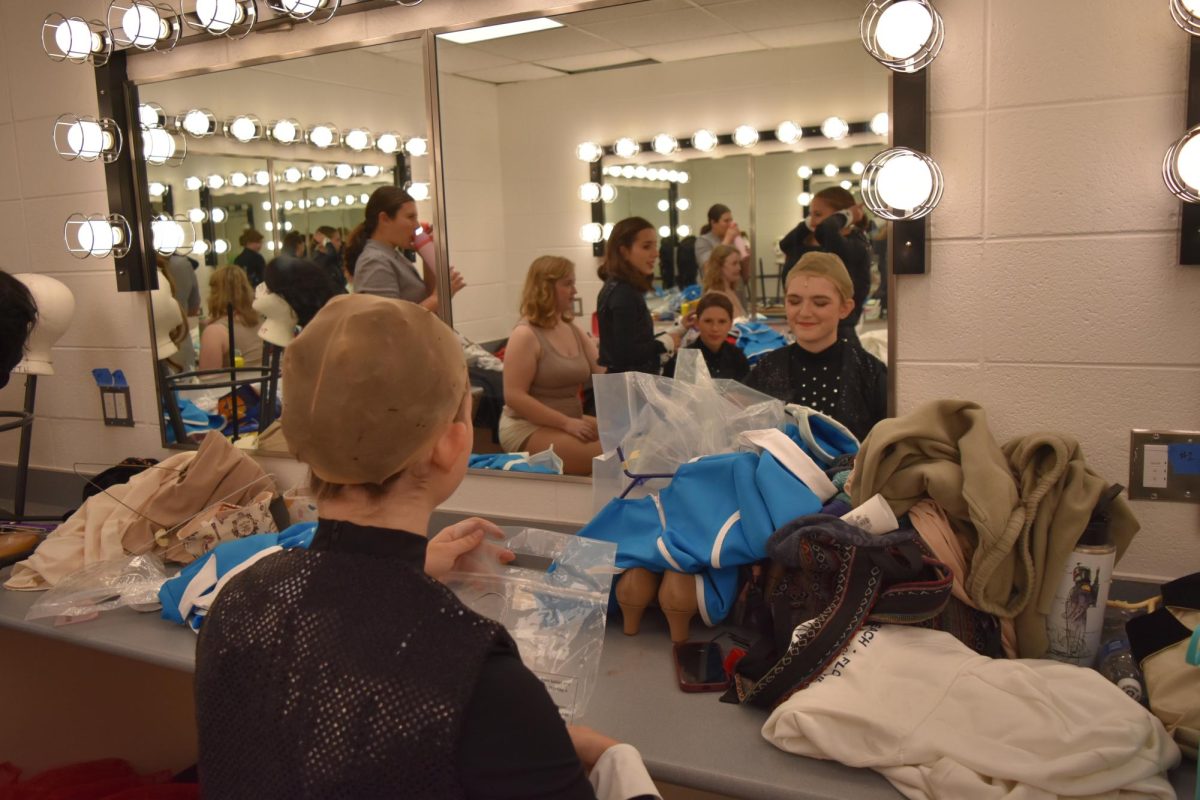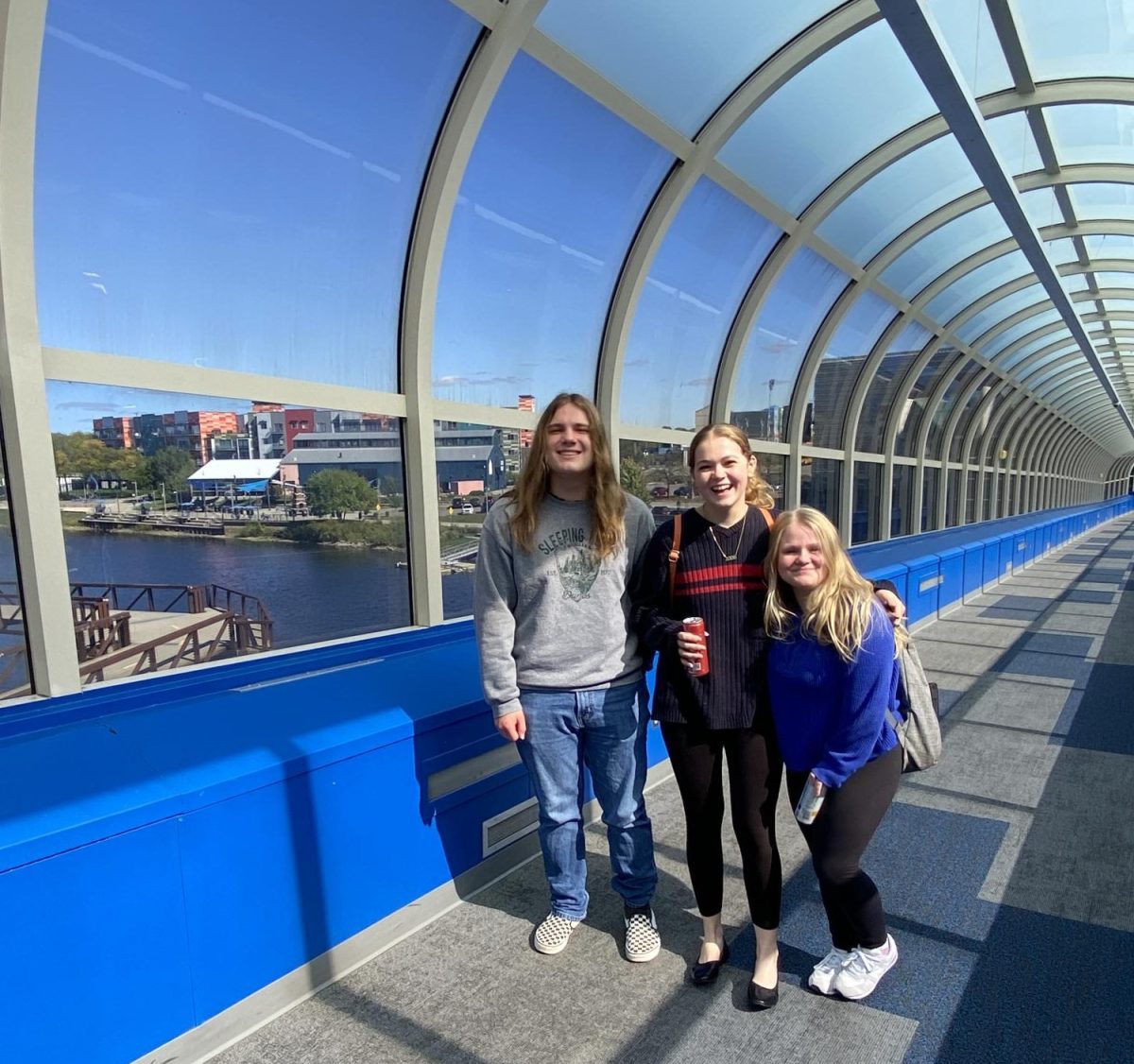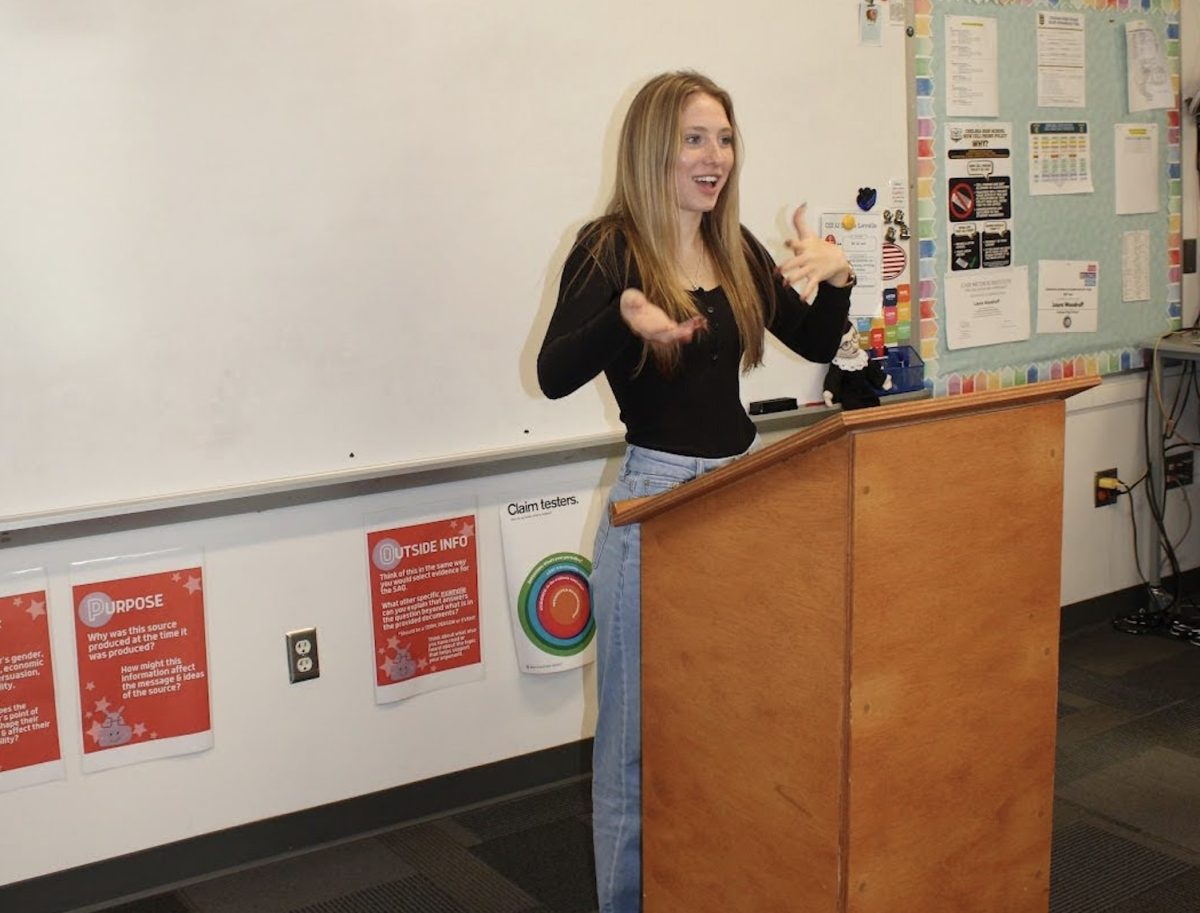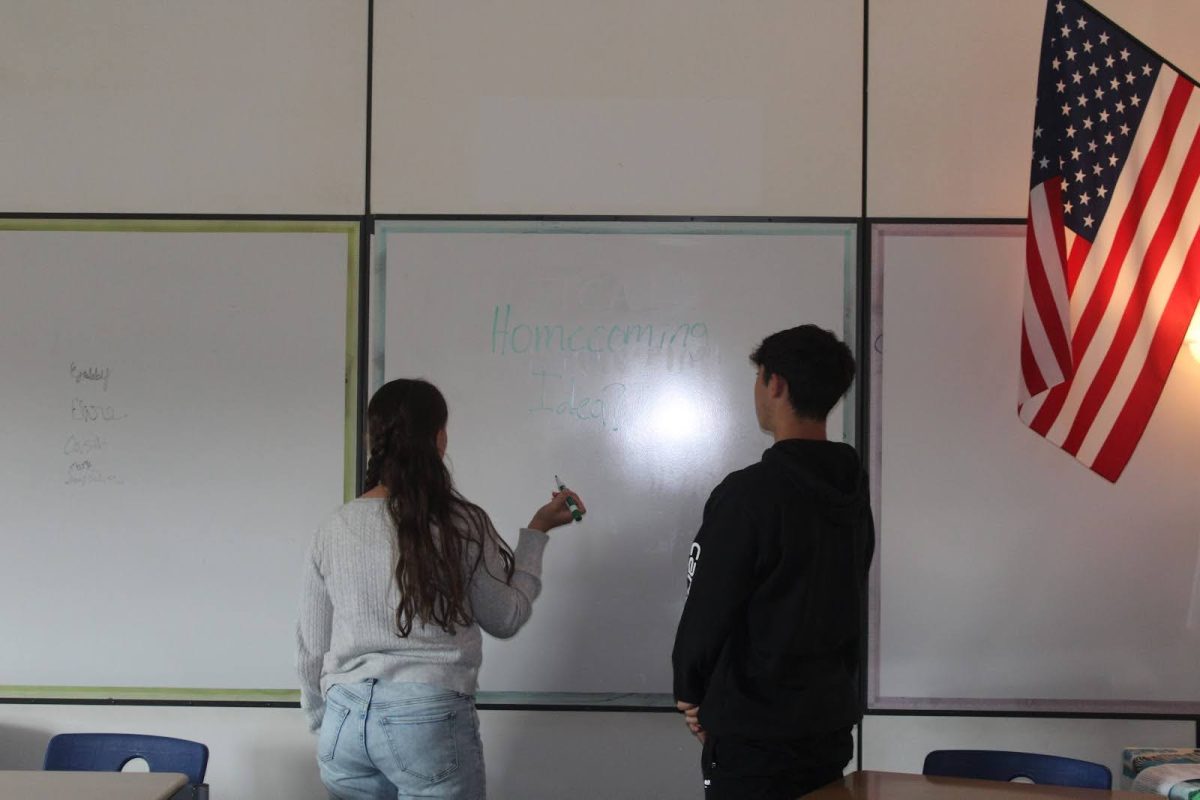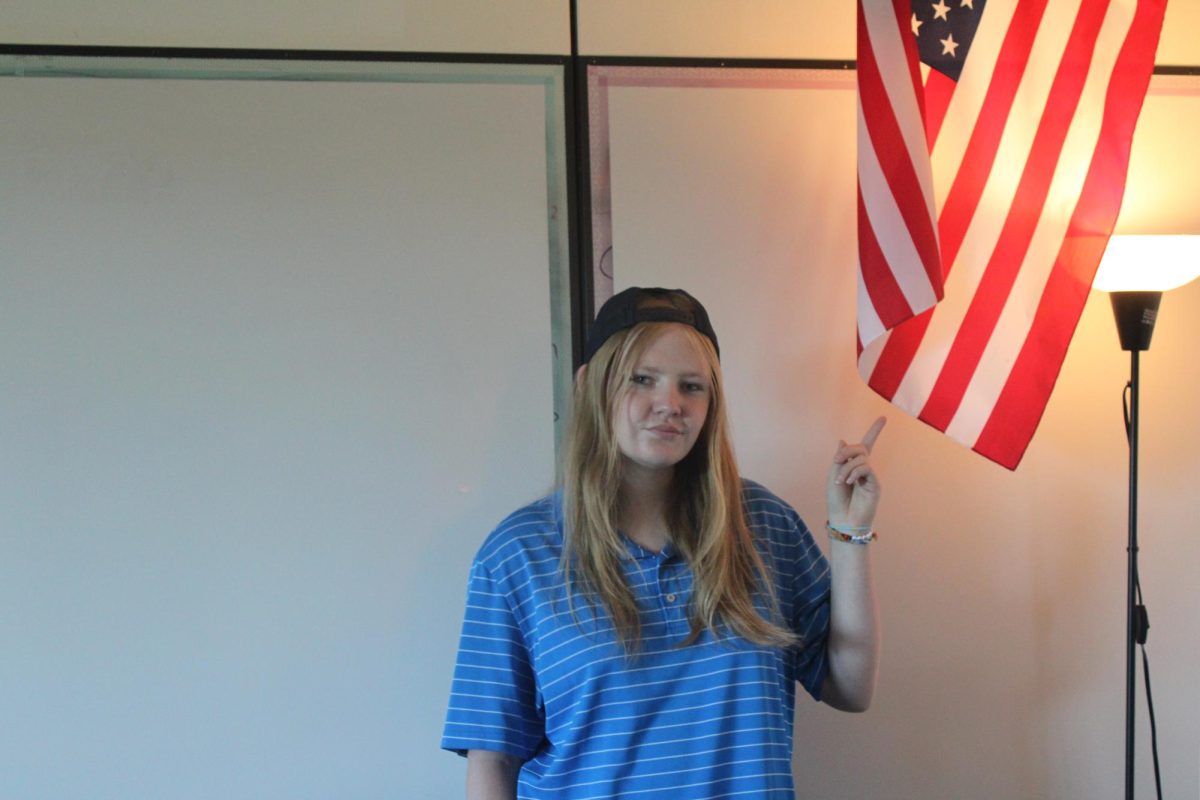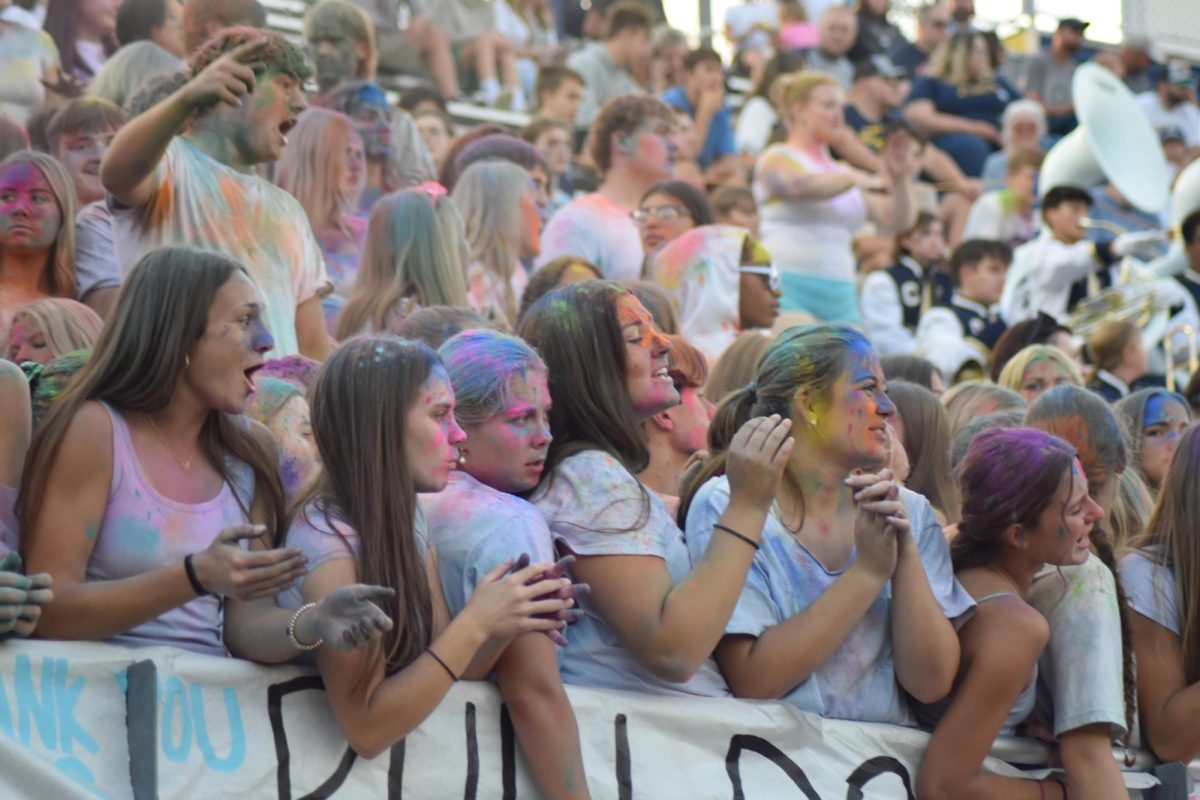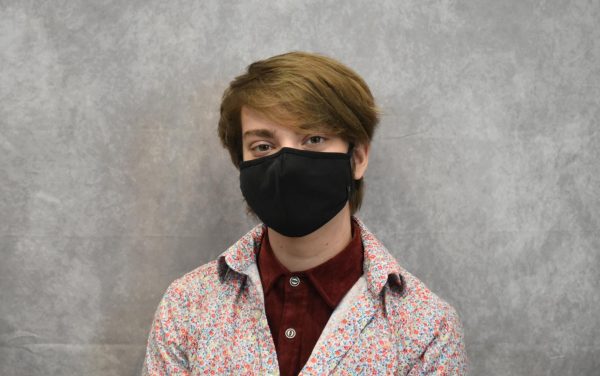The Israel-Hamas war that began in October of 2023 has claimed the lives of tens of thousands of Palestinians, prompting protests nationwide from students trying to make their voices heard. Though some of these protests have succeeded, most continue with a dark, suffocating sense that those in power aren’t listening to the voices of the people they’re supposed to represent.
With a death count in Palestine surpassing 43,000, the majority of deaths have been civilians— and the majority of those deaths are women and children. Outrage and mourning sweep not only Palestine, but countries across the globe. This anger and sadness have sparked protests internationally.
Notably, over 100 colleges across our nation have established ‘encampments’ with the end goal being to convince the institutions to divest from companies that have been funding aid to Israel or providing military technology. Dozens more colleges in other countries have followed suit, including ivory league schools Cambridge and Oxford in the United Kingdom.
To understand these encampments, it is first necessary to understand the war between Israel and Hamas. The Israel-Hamas war began on October 7th, 2023, when Hamas, a far-right Palestinian terrorist military group, attacked Israel by surprise, killing over 1,000 Israelis– of whom the majority were citizens. Hamas reportedly justified the attack based on “Israeli crimes against the Palestinian people” (BBC, 2024). The counterattack by Israel began with airstrikes on the Gaza Strip, the part of Palestine that Hamas occupied.
Despite Israel claiming only to be targeting Hamas, it became clear that Palestinian civilians’ suffering and casualties were not of concern. The first counteroffensive by Israel killed eleven Palestinian civilians and destroyed over 100 homes (Amnesty International). This alone is grounds for concern over war crimes, though, in the scope of things, it was unclear how expansive this war would become or if an attack of this scale was warranted.
As the violence rapidly accelerated and the news sources picked up on the destructiveness of the battle, people became aware that Israel was not discriminating in their attacks. Despite Israel’s claims to be targeting only Hamas militants, footage and reports coming out of Palestine showed unequivocally that Israel’s military was killing civilians en masse. Several news outlets have picked up stories about Israeli snipers purposefully targeting children, even those under two years of age, shooting them in the head in front of their families. One video in particular, shared by user @alijadallah66 on Instagram shows Israeli warships targeting a Palestinian fisherman in a small fishing boat.
As it stands, Israel’s leader Binyamin Netanyahu is being tried for committing genocide by the International Criminal Court, but his being tried does not cease the killing.
Palestinian civilians have been forced to flee their homes and congregate in Rafah, which had been hailed as one of the last pieces of land safe from the Israeli military. A few days ago Israel told them to evacuate, but they have nowhere else to go. The Israeli military has put up blockades to prevent anyone from getting in or out of Palestine, making it exceedingly difficult for civilians to find safe places to shelter. The population density in Rafah is higher than the population density in New York City, and Israel’s attack on Rafah has already begun. These attacks have consisted largely of airstrikes, sending explosions echoing across the city and adding to the bloodshed.
The United States has had a part to play in this war, though it may look from an outside perspective that it’s been a mostly hands-off approach. The US government has been providing funding to Israel, even in the midst of their attacks on innocent civilians. The United States has agreed to send Israel nearly $4 billion a year until 2028, and amidst the war, American lawmakers are considering upping the funding, giving Israel more grounds to fund their war. Additionally, U.S. companies, including companies as widespread as AM General, Boeing, Caterpillar, Ford Motor Company, General Electric, General Motors, Google/Alphabet, and Lockheed Martin, have been providing Israel with military technology and are making record profits from Israel’s war in Gaza.
Students who have set up encampments on their college campuses have the main goal of getting their schools to divest from companies, American or not, that have been providing Israel the materials to continue their war. Unfortunately, for the most part, the colleges have not been listening.
Outraged students have been taking full advantage of their First Amendment right to protest by peacefully setting up camps outside of their schools and demanding that the administrations comply with their demands and cut funding to Israel-supporting companies. Though the protestors themselves have been peaceful, these encampments have been met with extreme violence from counter-protesters siding with Israel.
Footage shared by protesters and journalists shows counter-protesters throwing lit fireworks into crowds of students, which exploded and set students’ tents on fire, sending them scrambling for cover. Other accounts from witnesses and journalists reveal that the pro-Israel counter-protesters marched on UCLA’s encampment with sticks and poles, beating the pro-Palestinian demonstrators and spraying them with bear spray, a stronger form of pepper spray that is illegal to use on humans. Other videos depict pro-Israel counter-protesters blaring loud audio of infants crying and airhorns, apparently taunting the college students and preventing them from getting rest overnight.
One account in particular helps to put the cruelty of these counter-protesters into perspective. Visibly disheveled and in pain, Aidan Doyle, UCLA student and activist, shares in a video posted on his Instagram account that the counter-protestors “came with rocks and stones, and batteries to throw at [them].” But being hit with batteries was the least of their concerns. “They came with wooden sticks and pepper spray to crush our spirits,” Doyle said. Though he’s covered in sweat and pepper spray, he stands tall and confidently delivers his message. “We will not leave until UCLA divests from all companies that have financial ties with Israel,” he said. “We will not leave, and our spirits will never be crushed.”
Unfortunately, as is the case with many of the protestors present on the night of May 1st, Doyle was beaten by the pro-Israel mob. “I was protecting the encampment from the zionists,” he said. “They tried to take a barricade from us, and when I held on, they pulled me into a circle of them, and they started beating me on the back. They threw a rock at my eye, they threw a hammer at my leg, and they slashed my arm, and then they pepper sprayed me in the eyes.” The video clearly shows his bruises, blood around his right eyebrow, redness from pepper spray, and a bandage on his face. Doyle expresses that he is more concerned about his classmates, whose injuries he said were far worse than his own. “I saw nineteen-year-old girls with their faces completely bloodied and beaten,” he said. Visibly and vocally upset, Doyle insisted that “this was with little to no provocation,” and “while you might think [he’s] exaggerating, there is no comparison as to who has been more violent.”
But the violent counter-protesters aren’t the only thing that students have to worry about. The campus and state police, the very people who are supposed to be there to prevent violent outbreaks in the first place, have been violent towards the protestors as well. Footage shared to social media and shared by user @mayochup_in_my_cup on TikTok shows police pointing guns loaded with rubber bullets directly at a girl’s head from less than four feet away, shouting at her that she wasn’t allowed to get her bag. At this distance, rubber bullets are lethal. And evidently, law enforcement is not afraid to use those rubber bullets.
In a video shared by user @newsnationnow on TikTok, armed police in riot gear are seen trying to dismantle a barricade put up by protestors in an encampment. The officer in focus can be seen raising his gun upwards, just about head-level, and firing a rubber bullet point-blank into the crowd. Not only is this dangerous and potentially lethal, it is illegal.
In response to a post about how many students had to be hospitalized after being shot in the head with rubber bullets, social media platform “X” user Lorena Gonzalez posted a comment that reads: “Um… I wrote and passed a bill on that. Rubber bullets are not intended for nor should they be used to fire directly at a person’s head.”
Misuse of police force has been far from limited to rubber bullets. It has become clear that law enforcement officials are even targeting individuals. A horrifying video shared on X by user @prem_thakker shows the moment someone points out an elderly professor in an orange shirt, and the police subsequently walk over to him, tackle him, and slam him to the ground. Unable to walk, police drag his body across the lawn to an ambulance and drop him onto the ground, where he lies there motionless. Bystanders can be heard shouting in fear, screaming at law enforcement “Don’t hurt him!” The professor in the video, Southern Illinois University professor Steve Tamari, wrote and shared a statement from his hospital bed: “As a result of police brutality, I am now in hospital with multiple broken ribs and a broken hand. One doctor told me I was lucky to be alive; my lungs could have been punctured and I could have died on the ground as they abused me.” Although his suffering has been substantial and the whole ordeal was terrifying, he writes that his experience was “a small price to pay for Israel’s ongoing genocide in Gaza,” and that “the students are our collective best hope for an end to wanton violence, a more humane future, and a free Palestine.”
With police brutality running rampant on campuses across the country, the bias of law enforcement shines through as well. A video shared by the account “Democracy Now!” on YouTube shows a group of police officers tearing down a Palestinian flag from a flagpole, balling it up, throwing it to the ground, and raising an American flag in its place.
And there are endlessly more things to talk about. A multitude of videos surfacing online show swaths of police in riot gear marching across campuses and roadways like a swarm of bees. A video shows a student who was attacked and sustained a head wound, sitting with his face in his hands and fear in his eyes as he bled profusely from his scalp.
Watching these videos feels like a slow death. It’s almost post-apocalyptic, watching it all unfold. Seeing these well-meaning individuals risking their lives to try and get the people in charge to listen and having nothing come of it makes me feel hopeless for the future of our generation. Seeing misleading media headlines that imply that both sides of the protest were equally violent is disgusting, and seeing statements made by law enforcement like the one made by Chief Dominic Choi of the LAPD that reassured people there were “no serious injuries to officers or protestors” while several students had to be hospitalized because the police shot them in the head with rubber bullets makes me sick.
99% of the protests by students on college campuses advocating for Palestinian freedom are peaceful, and yet they are met with violence. Hundreds of thousands of students have made it very, very clear that the majority of them want their schools to stop supporting companies that have financial ties to Israel, and yet only a handful of colleges have complied.
Of course, it’s nuanced— nothing is black and white, and this is far from an exception. Hamas is a terrorist organization. There are instances of antisemitism in the encampments. It has become an issue in many cases for students to get to their classes because their campuses are filled with protesters and tents. Several graduations have been canceled, moved, or scaled down because the protests have brought the threat of violence by counterprotesters to the entirety of attendees, not just the pro-Palestinian protestors or their encampments. Classes have had to be canceled, and protesters have yelled obscenities, but nothing— nothing— can excuse the amount of violence perpetrated by pro-Israel groups and law enforcement. Nothing can excuse the amount of students who were unlawfully arrested. Nothing can excuse the amount of bloodshed that has swept across our nation in what should have been a peaceful movement.
I am beyond angry with the way that our government and law enforcement have conducted themselves through the ongoing massacre in Palestine, and I am furious with the people in this country who have deemed it necessary and right to inflict harm upon those who are protesting peacefully.
And still, I have to be hopeful. Protests like this have happened in the past, like the Vietnam War, the civil rights movement, and even as recently as the Black Lives Matter movement in 2020, and a lot of the time the protestors in large-scale protests like these end up being right. Some of these college protests have even been successful in convincing their respective administrations to divest from all of the companies supporting Israel, though not many.
I can only hope that the people in charge might listen and make real changes in response to these protests, instead of in response to what will happen if they don’t.
Free Palestine.


